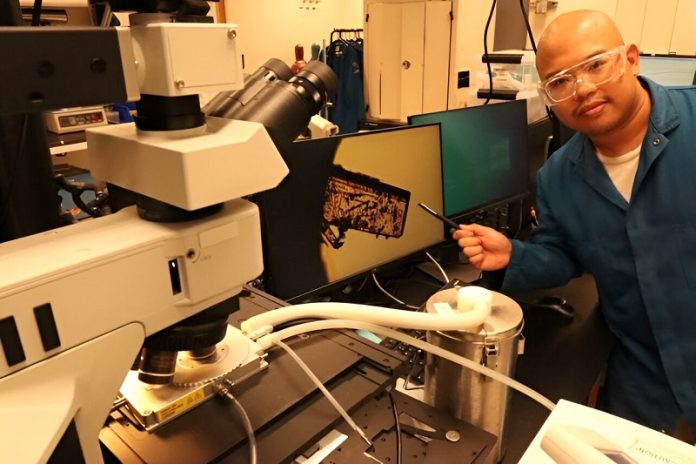
Scientists at the University of California, Irvine have developed a groundbreaking new material that can measure the temperature of objects on an incredibly small scale.
This one-dimensional nanoscale material changes color based on temperature, making it a powerful tool for tiny temperature readings.
The discovery, led by Professor Maxx Arguilla and his research team, was published in Advanced Materials.
Professor Arguilla described these nanoscale thermometers as being like “nano-scale mood rings,” which change color based on the wearer’s body temperature. However, these new thermometers are much more advanced.
They can be precisely calibrated to measure temperatures at the nanoscale, providing accurate readings that could be crucial in various fields, from biology to electronics.
Temperature is a critical factor in many biological and industrial processes, and having a way to track even the smallest changes can be incredibly valuable. Arguilla mentioned that these new thermometers might even be used to measure temperatures inside cells, opening up new possibilities for medical research.
The material was created in the lab by growing crystals that, when viewed at the nanometer scale, look like tiny helical “slinkies.”
The research team, including postdoctoral scholar Dmitri Cordova, was initially interested in studying how these crystals responded to heat stress. As they experimented, they noticed that the color of the crystals changed systematically depending on the temperature.
Cordova and undergraduate researcher Leo Cheng took careful measurements and found that the crystals’ colors changed from light yellow at very low temperatures (around -190 degrees Celsius) to red-orange at higher temperatures (up to 200 degrees Celsius).
This color change corresponds directly to specific temperatures, allowing the material to be used as an optical thermometer.
The research team developed a method to create nanoscale samples of the material by using adhesive tape to peel off tiny pieces from larger crystals. These nanoscale thermometers can then be attached to other materials or surfaces, making them versatile tools for measuring temperature on a very small scale.
Arguilla emphasized that this discovery is just the beginning. His lab plans to explore other nanoscale materials to develop thermometers that can measure even wider temperature ranges and become even more sensitive.
The goal is to expand the “toolbox” for optical thermometry, taking it from larger scales down to the nanoscale.
This innovative work could have far-reaching impacts, especially in fields where precise temperature control is essential.
As the team continues to refine their materials, the possibilities for new applications are vast, potentially revolutionizing how temperature is measured in tiny, complex systems.



